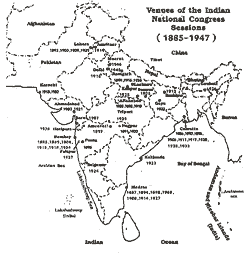- English
- Sociology
- Functional English
- Psychology
- Mathematics
- Philosopy
- Physics
- Computer Science
- Chemistry
- Entrepreneurship
- Biology
- Informatics Practices
- Geography
- Multimedia & Web Technology
- Economics
- Biotechnology
- Business Studies
- Physical Education
- Accountancy
- Fine Arts
- Political Science
- History
- Agriculture
CBSE Guess > Papers > Question Papers > Class XII > 2004 > History > Delhi Set-I
HISTORY (Set I— Delhi)
PART - A
(MODERN INDIA)
Q. 1. Mention the name of the magazine published by Devendranath Tagore in the 19th Century and mention its main aim.
Q. 2. Mention two objectives of A.O. Hums behind founding the Indian National Congress.
Q. 3. State two objectives of the Wavel Plans (1945).
Q. 4. Describe briefly the position of women during 18th Century India. 5
Or
Describe briefly the contributions fo Balaji Vishwanath (1713-1720) in expanding the Maratha Empire.
Q. 5. Explain the causes and the results of the First Carnatic war (1746-1748).
Or
Examine the working of dyarchy in Bengal.
Q. 6. Explain briefly any five political causes of the Revolt of 1857. 5
Or
Explain how the Revolt of 1857 was the first war for national Independence.
Q. 7. Explain the objectives of the Proclamation made by Queen Victoria after the Revolt of 1857. 5
Or
Explain the steps taken by the British in 1877 to discourage the Indians from competing for the I.C.S. examination.
Q. 8. In what way the Savarkar brothers had been infused with a sense of patriotism since their childhood? Explain with examples.
Or
Explain the programme and the course of action of the Gadar Party. Give reasons for iti t to achieve its objectives.
Q. 9. Describe the Constructive programmes of Mahatma Gandhi during the Freedom Struggle in India.
Or
Describe “The Kakori Conspiracy Case” and “Chittagong Armoury Raid” as a part of revolutionary activities during the freedom Struggle of India.
Q. 10. Explain the far reaching consequences of the Partition of Bengal. How did the Indians react to it?
Or
Examine the developments leading to the formation of the Lucknow Pact and explain it. results.
Q. 11. Evaluate the contribution of Subhash Chandra Boa in the Freedom Struggle of India.
Or
Read the following extract taken from the letter written to Churchill, carefully and answer the questions that follow:
“I am engaged here in confronting by far the moat serious rebellion since that of 1857, the gravity and extent of which we have had so far concealed from the world for reasons of military security. On account of this movement, a generation of leadership came to the force in the country and people’s confidence to struggle further increased.
(i) Name the Viceroy who write this letter to Churchill.
(ii) In what context this letter was written?
(iii) Explain two main developments of this movement which compelled the British to leave India.
(iv) Why was this movement called a serious rebellion?
Q. 12. On the given political outline map of India locate and label any five centres of the Revolt of 1857 in Northern India.

Or
On the given political outline map of India locate and label any five venues of the India National Congress Session in the Freedom Struggle of India from 1919 to 1929.

PART - B
(CONTEMPORARY WORLD HISTOR)
Q. 13. Mention four main organs of the League of Nation.
Q. 14. Mention two aims under which Stalin started Five year plan in U.S.S.R.
Q. 15. Why is Japanese invasion of Manchuria in 1931 considered a world shaking venture?
Q. 16. Mention any two steps taken by the Southern Christian Leadership Council against the segregation and discrimination towards the Blacks in the U.S.
Q. 17. Examine briefly two common characteristics of the literatures of Aurobindo and Rabindra Nath Tagore.
Q. 18. Explain briefly two developments in the field of science and technology which brought about the first scientific revolution in the world in 19th Century.
Q. 19. Stat. the terms agreed upon, under the Anglo-Russian Convention signed on 81st August, 1907.
Or
Describe briefly five terms of the Treaty of Versailles, signed between Allies and Germany.
Q. 20. Explain the three Fold Plan of Hitler after becoming Chancellor of Germany on 3” January, 1933 to consolidate the Nazis in power.
Or
Explain the measures taken by the British Government to tackle the situation of economic stagnation after the First World War.
Q. 21. Explain how the European Colonial Rule in Africa was one of the ugliest Chapters in World History.
Or
One of the flows of Nkrumah’s administration in Ghana was over centralization of authority which led to his downfall. Explain.
Q. 22. Explain the causes of the Second World War.
Or
Explain the efforts made in the direction of disarmament and arms control.
Q. 23. On the given outline map of Europe, mark and label three neutral and two Allies of the Central Power.
Or
Mark and label two countries of the Central powers and three countries.of Triple Entente.

Q. 24. Mention the names of three Neutral and two Allied countries of the Central Powers in 1914.
Or
Two countries of the Central powers and three countries of Extente in 1914.
| History 2004 Question Papers Class XII | |||
| Delhi | Outside Delhi | ||
| Set I | Set I | ||
| Set II | Set II | ||
| Set III | Set III | ||
